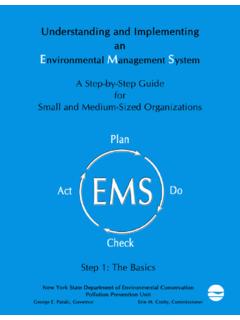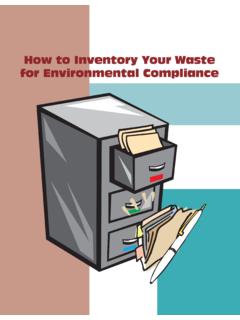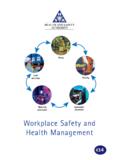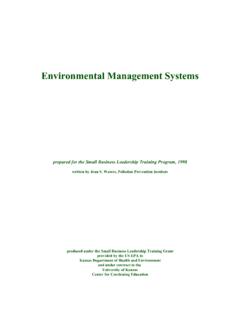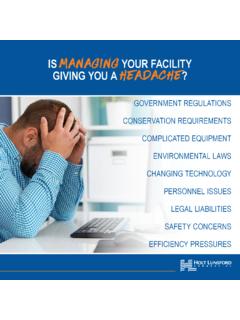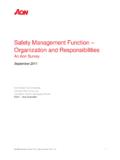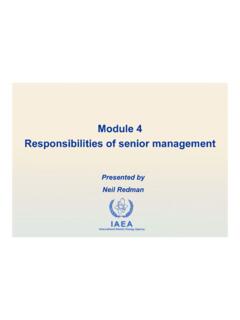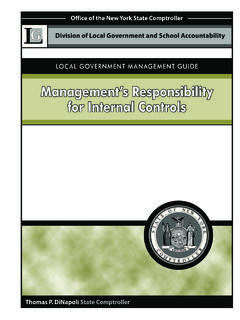Transcription of MANAGING your p25 system - go.taitradio.com
1 P25 BEST PracticeMANAGING your p25 systemThe decision to adopt the digital open standards-based P25 platform offers Public Safety agencies many benefits, but it also raises a lot of questions. There are many common questions and there are many agencies who have already tackled them, who are happy to share their experiences. Tait is sponsoring an on-going project, to discuss these topics and put forward some a series of intensive round-table sessions, our participants discussed their own experiences and challenges, generously sharing their frustrations and triumphs. Together with Tait expert advice, these guides include their many valuable insights, based on their hands-on experience working through typical P25 project should read these guides? If you are a Public Safety official who is responsible for, or involved in, procuring a new communication system , this guide (and the others in the series) is written for you.
2 You may be new to the position, or focused on other disciplines, such as IT. Or you may be new to P25. We assume that you have an understanding of Land Mobile Radio, but not necessarily in-depth also assume that your interest is pragmatic; you want to make sure you procure and/or manage your radio system to meet the needs of your first responders and public service providers in a fiscally-responsible way. Becoming an expert on all related topics is not your hope these guides will benefit you and your wider Public Safety Communications community by presenting you with a range of P25 topics so you can more effectively engage in the more and subscribe to future guides at What are your options for MANAGING your network? What should you be monitoring? How do you prepare for major events? MANAGING your P25 system MANAGING a P25 network requires significant, up-to-date experience and knowledge, as the complexity of Public Safety networks continues to increase.
3 The primary responsibility for system management rests with the system owner, usually a government agency, assisted by equipment vendors and local technical support objective of this guide and its companion volumes is to provide high level information to assist Public Safety professionals responsible for a P25 communications system . These are not hard and fast rules. These recommendations are based on Tait experience and the informed opinions of industry players who have attended our round-table workshops and shared their best advice, based on hands-on experience working through typical P25 network Network Management 2 Network Maintenance 5 Network Monitoring 7 What Should be Monitored? 15 Repairs, Upgrades and Checks 19 Asset Tracking 26 Administration 29 Network Optimization 32 Major Events Preparedness 37 Interoperability 44 Post-event Performance Testing 49 Insights 51 This Best Practice guide for MANAGING P25 systems uses a simplified, non-chronological approach.
4 The organization of topics is loosely based on standards in related industries (IT) as there are currently no known, well-established standards for MANAGING Public Safety radio systems (2014). The cornerstones of P25 network management are: Network maintenance maintaining operations of your system at the expected level Network optimization making your network operate better Major event preparedness being prepared for emergencies and events Network security protecting your network from physical or cyber attackNetwork security will be addressed in a separate Best Practice guide. 1[[P25 Network ManagementNetwork MaintenanceNetwork SecurityNetwork OptimizationMajor Event PreparednessNetwork MonitoringRepairs, upgrades and checksAsset trackingAdministrationPhysical security Encryption Cyber security ResiliencyCapacityInteroperbilitySOP s and TrainingCoverageTechnologyPeople & ProcessesFunctional performanceUser experienceSecurityCost2[[ MANAGING a P25 digital radio system is very different from MANAGING your old analog system .]]]]
5 The demand for sophisticated network management techniques and processes among Public Safety organizations is only beginning to emerge. This area of Public Safety operations will have to change significantly within the next few years. The old static, hardware-based systems of yesterday that run without a problem (as long as there was no physical damage) are no longer the norm. Public Safety networks are increasing in complexity as software components become more significant. The interdependence between various system components, often coming from different vendors, with different (and continuously shortening) life cycles is turning a very static system into a highly dynamic network requiring new processes, methods of care and new sets of , while tools to simplify network management abound, they should not define it. It is more important to understand what needs to be managed and to provide practices, people, and resources to manage your network [[ The next generation of technical personnel will be more comfortable with digital complexity, but they are not at management level yet.]]
6 Eventually all small networks will migrate to large, and all will be managed. Big system owners need to accept more users. 4[[This section focuses on maintaining the technical integrity of your system for routine operations. Monitoring a P25 radio system is very different from monitoring an analog system . The P25 radio network is made up of numerous components, which must communicate with each other. To successfully manage them, you need to understand their use and how they communicate. Broadly, the components can be classified in three tiers: system -level components ( network controllers), site-level components ( base stations), subscriber-level components ( portable and mobile radios).In contrast to analog systems which often contain proprietary equipment and interfaces, open-standard P25 communication networks are generally IP-based.]]
7 They utilize components (such as switches and routers) that make use of standard transport protocols (such as TCP/IP), and also include built-in IP monitoring that conforms to the standard Simple Network Management Protocol (SNMP).A variety of SNMP-based tools, from the simplest to the most sophisticated network management applications, can monitor all the components of your P25 network. Network Maintenance5[[6[[Even among the largest state-wide systems, network monitoring practices vary from strict, structured 24/7 internal operations to a reactive approach responding only to complaints from system users. Why are relatively few Public Safety systems proactively monitored? Back in the days of software-free radio systems, not much could go wrong. As long as there was power at the sites, power amplifiers did not burn, and antennas were not damaged by lightning, your system was probably in good shape.]]]]
8 Should anything go wrong, your subscribers would quickly tell you that their channel was not working. As a result, many people in charge of digital radio systems do not give monitoring a sufficiently high priority. Dedicated 24/7 resource can be expensive, but your network should be monitored, regardless of size, using the approaches matching your needs and capabilities. Alternative methods to 24/7 Network Operations Centers (NOCs) include: system monitoring terminals at dispatch centers, automatic page or text messages to technical or administrative personnel in case of an alarm, ad hoc monitoring by local service providers (internal or external). Network Monitoring7[[So while you don t need 24/7 staffing if you have a good alternative system in place, simply maintaining the status quo for the many under-monitored systems is no longer viable.]]
9 Software-dependent digital networks are subject to glitches, viruses and compatibility issues. They are heavily dependent on correct operation of complex subsystems such as fiber backhaul (often provided by TelCo), and are subject to frequent software upgrades. So they are much more vulnerable than analog networks become more complex and interconnected, a virus brought into a dispatch console (perhaps doubling as a gaming PC during the slow hours) can cause serious issues for your entire P25 network should be monitored regardless of its size, with management methods and resources that match your organization s needs and who are on the system every day will pick up problems before they are reported. They are constantly talking and listening. 8[[Risk factorsAt RF sites/equipment rooms: Copper theft, Power loss, Intrusion Antenna system failures environmental issues At dispatch centers: Backhaul failures Fiber operator errors Microwave - weather Theft and misuse Subscriber devices: Too many to list!]]
10 Maintenance and administrative equipment: Calibration People accessing the terminal and changing parameters haphazardly without reporting it to anyone9[[Who should monitor your network?The technical tools for monitoring P25 networks are well known and widely available. Network management applications can monitor system activity and compile useful analyses and reports. These, in turn, can be used to observe trends, identify over (or under) utilized sites and consoles, and anticipate where channels or sites need to be added. A greater challenge is to obtain technical resource to monitor and interpret network status systemsSystems with thousands of users (state-wide networks, large counties or major metropolitan areas) should operate their own 24/7 network operation centers (NOCs). NOC personnel typically monitor network performance and take responsibility for system configuration, user ID creation and talk group management.]]
